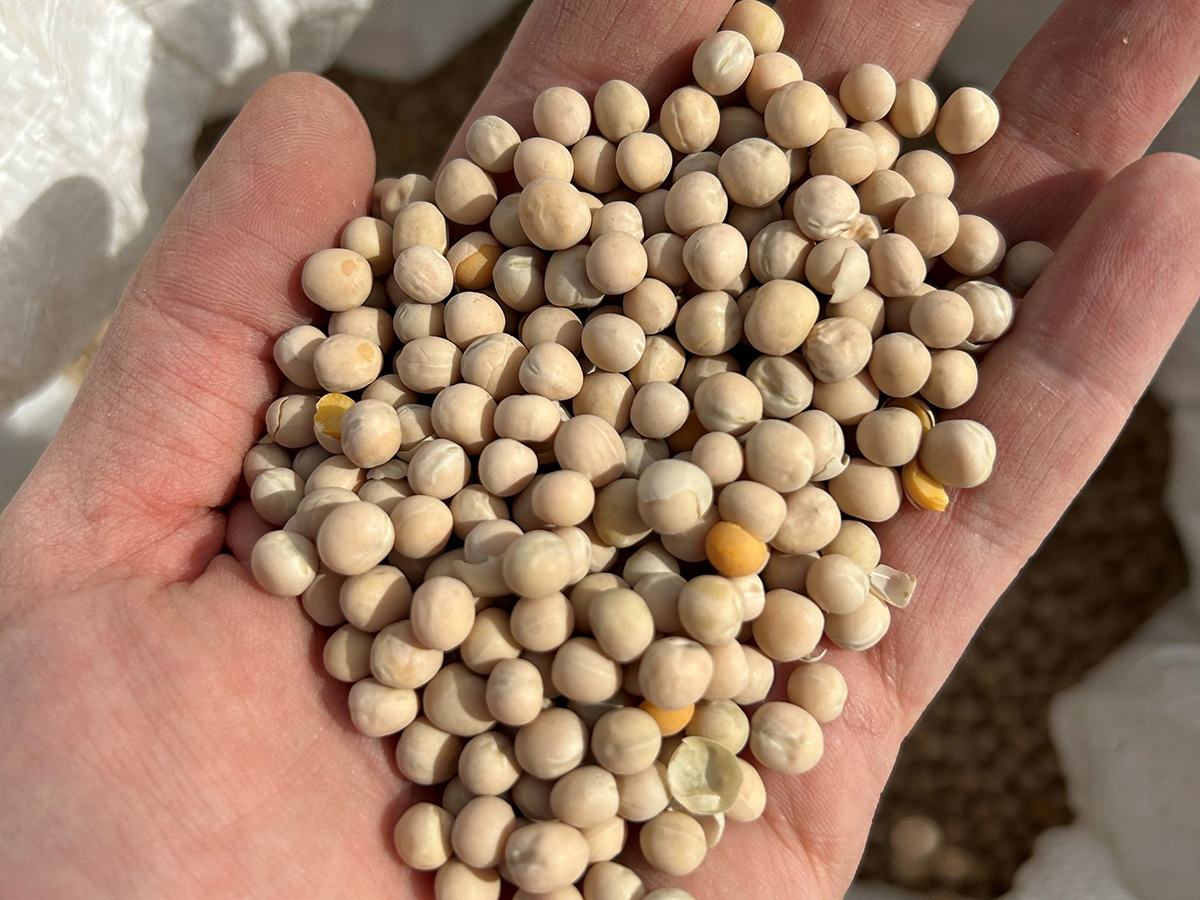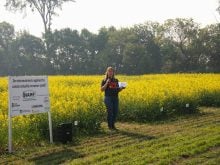Pea processing leaves a lot of byproducts behind, and researchers believe those byproducts could be put to better use.
Wade Abbott, a senior research scientist with Agriculture Canada, and his research team at the Lethbridge Research Development Centre are determined to find ways to use the processing byproducts.
“We became interested in this work several years ago through talking to a local pea protein processor here in Lethbridge, and they had some innovative views on how to get better protein out and what we can do with the byproducts,” said Abbott.
Read Also

Europe holds promise for Canadian lentils
Pulse Canada is trying to help boost lentil consumption in Europe, which is already the fourth largest market.
“We have a great responsibility to try and use as much of the pea as we can, so that was kind of the incentive for the work.”
The byproducts from yellow field pea processing are starch and fibre, which are generally seen as low value byproducts. These products are often fed to livestock.

The four-member research team wanted to see if they could increase the value of these byproducts and use more of the pea. They also wanted to know about the structures in the pea and how these structures change during processing.
Abbott and his team are not pea protein scientists; they specialize in carbohydrate chemistry.
As soon as they started talking to industry stakeholders, they realized little is known about the chemistry of pea protein and how it changes during processing. Little is known about the chemistry of the fibre or the starch of the yellow field pea or the potential use for byproducts.
The researchers also wanted to know if the structures in the pea were varied based on where the pea is grown in Alberta, the production setting and climate factors. Other factors were abiotic and biotic stresses.
“We’re bringing some very sophisticated analytical techniques to the table to address these questions,” said Abbott.
The three-year project is focused on peas grown in Saskatchewan and Alberta over two growing seasons. The two years of samples will use wet and dry processing, the two most common methods used by the industry.
“It’s challenging because we’re new. We worked with Alberta Pulse Growers and Saskatchewan Pulse Growers. They helped make some introductions because we wanted to identify different soil regions and different types of production settings, like irrigated and non-irrigated,” Abbott said.
“We wanted some variability between harvests. We’re working directly with producers, so we’re driving to the farms and getting peas from the farm.”
Peas from the first harvest have just been collected.
The yellow peas that researchers are working with come in two types: those grown for seed and those grown for processing.
“We noticed a major difference in the cleanliness of the seeds. We started cleaning all the peas ourselves before processing,” he said.
The researchers wanted to use industry scale processing, so all processing was done at the Alberta Food Centre in Leduc. When the processing was completed, the researchers started analyzing peas from 10 farms in Alberta and Saskatchewan in February.
Dry processing transformed peas into hulls, protein and a mix of starch and fibre.
“We have all those samples fractionated now. The Alberta Food Centre is doing food science measurements, and then we’ll start on the analytical chemistry,” Abbott said.
Protein has been extracted, and the researchers will begin the analysis of the starch and fibre as well.
The byproducts could be used in a variety of ways. Abbott is interested in using them for 3D printing.
“You can form a biomaterial to make containers. To me, what would be super exciting is if we can ship the protein in containers made of starch and fibre from the pea, which is also biodegradable. We’re increasing the value of byproducts by creating shipping containers, and then it’s also something that can be recycled and degraded,” he said.
It will take the research team about three years to analyze all the samples, correlate the results and publish the findings, he said.
Abbott finds the project exciting.
“We’re scientists. We’re often trying to convince people that our work is important, and you know, convince people to fund the work so we can do the science,” he said.
“What I have found from this project is that there is a real appetite from the industry. Producers, processors and stakeholders are all getting behind the project and trying to help.…
“There’s been word of mouth and already quite a bit of interest. That’s something that I found to be quite different, is the interest of the industry. I think it’s because we’re all kind of pulling in the same direction, in the sense that we’re trying to increase the value of the co-products, which would benefit producers, processors and the environment.”
















